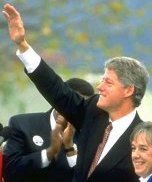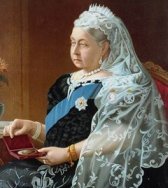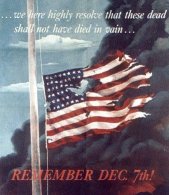Introduction
If politics is defined broadly as competition for
power over people and things, then it is clear that all societies have some
sort of political system. However, there can be a vast difference in
what political organizations look like and how they function in different
kinds of societies. It may initially seem to the casual observer that
some small-scale societies have no politicians or political organizations at all, but they
are present in very different forms than people in
modern
large-scale societies
expect. These unusual political systems are the primary focus of this tutorial.
Political
Roles and Offices
All Societies recognize political leadership roles of some sort. These are roles in which individuals generally have authority related to broad areas of concern for their society. They usually are allowed to make decisions concerning the group as a whole. They are often expected to lead community discussions and act as spokesmen in dealing with outsiders. They have power to control or at least strongly influence the behavior of others within the society by their powers of persuasion and sometimes by controlling the means of violence, such as the police and the legal system. They usually play a central role in defining their society's goals and public policy. They often are allowed access to and control over their society's important resources. However, this does not necessarily mean that they are richer than others. In fact, political leaders in some cultures are expected to essentially bankrupt themselves by periodically giving their wealth to others. In so doing, they increase their political influence and power. This was often the case with the "big men" of New Guinea and the traditional leaders of Native American communities on Vancouver Island in Western Canada who were described in the Economic Systems tutorial as examples of key players in complex redistributive systems of small-scale societies.
 |
|
| U.S. President is a
political role that continues after the current office holder leaves |
|
When most people in the Western World think of political roles and offices, what probably comes to mind are presidents, prime ministers, governors, and legislators. These are generally permanent political offices that exist apart from the people who occupy them. In other words, the political positions continue after the current office holders leave them. Another individual then takes over in the same position. This often is not the case in foraging societies. Their political roles are usually temporary and short term. For instance, a man may become a hunt leader with authority to make decisions for his fellow hunters but only as long as the hunt goes on. When it is over, his authority vanishes as does the hunt leader position because it no longer is needed.
Large-scale societies have many different continuing political offices. They are organized into bureaucracies of positions with different levels of responsibility, power, and authority that are generally ranked relative to each other. In the United States, for instance, the President has greater authority than the Secretary of State, and he or she, in turn, is above ambassadors. Large bureaucracies with the clearest chains of command are usually military organizations. Soldiers and officers are trained to know and accept the authority of their superiors and to take responsibility for those under them. There is little ambiguity about the chain of command. This kind of clear demarcation of authority is not present in all political systems. The United States has a federal government with only limited authority over the 50 states. Each state has its own government that largely mirrors that of the national government. From the very beginnings of the U.S. over 200 years ago, there have been repeated disputes between state and federal authorities over political and legal jurisdiction. In fact, the American Civil War fought between 1861 and 1865 was largely over this conflict. Even today, federal and state jurisdictions overlap at times, which results in disagreements. The U.S. Supreme Court has made many important legal decisions to sort out these disputes and no doubt will need to do so in the future as well.
| Modern national government bureaucracies are often large, requiring considerable office space. The Pentagon in Washington D.C. is where much of the U.S. military central bureaucracy works. With 17.5 miles of corridors, it is one of the world's biggest buildings. |
 |
How
Do Politicians Get Their Positions?
 |
|
Succession by inheritance |
The process by which an individual legitimately acquires a political office or authority position occurs in several different ways around the world. In some societies, succession is the result of inheritance through kinship-based ties. This usually means inheritance from a deceased relative. This was the common pattern among elite families in large-scale agriculture-based kingdoms and empires of the past. A king's son became the next king. However, rules of succession by inheritance were sometimes intentionally left somewhat vague to allow deviation when needed. For instance, if the eldest son of a ruler is not up to the job, ambiguous inheritance rules could allow him to be bypassed in favor of his younger, more competent brother or sister. In democratic societies of our time, politicians are usually elected to political offices and inheritance is frowned upon as an unfair path to political power. In small-scale foraging societies, succession often results from personal achievement rather than election. An individual may become a leader without a vote because it is generally understood in the community that he has proven his ability more than others. There is no need for a vote or even much discussion since everyone tacitly agrees. In many societies with hierarchies of political positions, some or all lower level political offices are filled by appointment from above rather than election.
These different mechanisms for legitimate succession to political office are not always cleanly distinct from each other. For instance, succession by achievement and appointment from above may be combined. Military officers in modern democratic nations are generally appointed from above by superior officers who base their decision on the personal achievements and capabilities of the person being promoted.
In many societies, the prescribed method for succession to office may be circumvented through behind-the-scenes negotiations by power brokers using coercion, bribes, and promises of future rewards. Political deal-making is usually an integral part of most political systems, including those that are ostensibly very democratic. It also is not uncommon around the world for individuals or groups to seize power illegally and brutally eliminate competition and dissenting voices.
It is common for political leaders to be members of political factions consisting of like-minded individuals. In large-scale societies, these factions often form recognizable political parties. Whether they are members of informal factions or established political parties, a common tool used by politicians around the world is a political symbol. This is an idea or physical thing that is used as a tool for focusing the attention and emotions of people. It can be as simple as the phrase "a chicken in every pot and a car in every garage" which was used by Herbert Hoover in his 1928 U.S. presidential election campaign. It can be a call for major change such as the replacement of a king with a legislature or conversion of "non-believers" to the "true-religion." It can be the idea that some other ethnic group is responsible for society's problems. The last example is one of the most effective kinds of political symbols that the NAZI party used to gain power in Germany during the 1920's and early 1930's. They blamed Jews as the main reason for Germany's economic and military failures. Jews were the political symbol in this case. A political symbol also can be a simple object such as a national flag. Soldiers have died to protect their nation's flag despite the fact that it was only a piece of dyed cloth. For them, the symbolic meaning of their flag was the important reality.
| World War II poster that used the American flag and bitter memories of the December 7, 1941 attack on Pearl Harbor by the Japanese as very powerful political symbols intended to encourage patriotism and increase enlistments in the U.S. military services |
|
Levels of
Political Integration
In the early 20th century, anthropologists developed several useful systems for classifying societies. These made it easier to understand patterns of similarities and differences between cultures. Classification generally focused on either the nature of the economy or the political system. Subsistence pattern differences have been the primary focus of economy-based distinctions. This resulted in the recognition of four principle categories of societies--foraging, pastoralist, horticultural, and intensive agricultural. Some anthropologists further subdivided these categories. For instance, the intensive agriculture category was broken down into preindustrial and industrial societies. In contrast to this economy-based approach, a politics focused classification usually distinguishes societies based on the nature of their political institutions and how power is distributed. In 1962, the American Anthropologist Elman Service observed in his seminal book, Primitive Social Organization, that as the size of a society's population and territory grow, it requires new kinds of political leaders and organizations in order to solve the inevitable societal problems inherent in population growth and to avoid splitting into separate societies. He referred to these different kinds of political solutions as levels of political integration. He described four levels that have been found around the world--band, tribe, chiefdom, and state. While there are unique cultural variations of each of these levels, they are substantially alike from one society to another. Subsequently, classifying a society in terms of its level of political integration has proven to be another useful tool in comprehending the wide range of human cultures and societies from small foraging communities to modern nation states. The next two sections of this tutorial explore the nature of bands, tribes, chiefdoms, and states.
This page was last updated on
Thursday, November 08, 2007.
Copyright 2004-2007 by Dennis
O'Neil. All rights reserved.
Illustration credits
